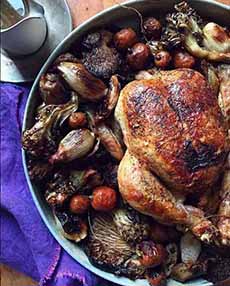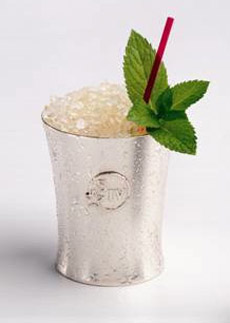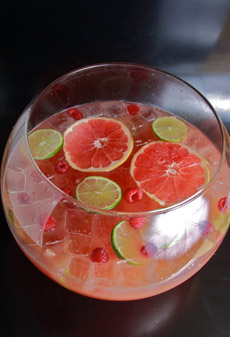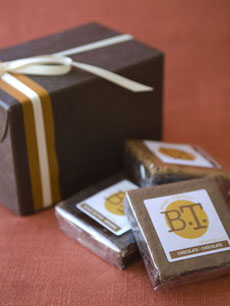|
Friday, May 4th is National Orange Juice Day. While it’s easy to celebrate with a glass of OJ at breakfast, there are other ways to use orange juice. Here are 10 of our favorites.
> The history of orange juice.
> The history of oranges.
USES FOR ORANGE JUICE
1. Basting Liquid. Orange juice adds delicious flavor to beef, pork and poultry.
2. Cake Mix. Replace the water in the recipe with orange juice in vanilla/white/yellow and chocolate cake cake mixes.
3. Cocktails. There are many, including the Mimosa, Sex On The Beach and Tequila Sunrise. But the classic is a Screwdriver: 1.5 ounces of vodka and 6 ounces of orange juice, with an orange wheel garnish.
4. French Toast, Pancakes & Waffles. Add a tablespoon of juice to your batter. This works best with an added teaspoon of orange zest—and is a reason why you should zest citrus rinds and freeze the zest before throwing out the pulp.
5. Ice Cubes. Freeze the juice in ice cube trays—plain or with an added berry, cherry or snippet of sweet herb (basil, rosemary, thyme).
6. Ice Pops. Freeze the juice plain in an ice pop mold, or mix with vanilla yogurt for a Creamsicle effect. You can also make granita or sorbet.
7. Marinade. Add 1/4 cup of orange juice to your regular marinade. For a basic marinade, start with 3 tablespoons red wine vinegar, 1/3 cup olive oil, 2 cloves chopped garlic, 1 tablespoon each of two different chopped herbs (parsley and thyme go well with everything), and for some heat, 1/4 to 1/2 teaspoon crushed red pepper flakes.
8. Salad Dressing. For a green salad or fruit salad, substitute orange juice for half the vinegar. You can also use one or more tablespoons of juice to thin the mayonnaise in a chicken salad, coleslaw, or any salad that’s bound with mayo.
9. Smoothie. Add 1/4 cup of orange juice to your regular smoothie recipe; or whip one up with 1/4 cup orange juice, 1 cup fresh fruit and 1 container (6 ounces) of your favorite nonfat yogurt.
10. Spritzer. Enjoy OJ with fewer calories. Dilute orange juice with club soda (try 1/3:2/3, then 1/2:1/2) for a refreshing soft drink, with an optional squeeze of lemon or lime.
What are your favorite ways to use orange juice?
|
|

[1] Baste your chicken with orange juice (photo © Melina Hammer). See more of her beautiful food photography and her award-winning cookbook at MelinaHammer.com.

[2] Add some orange juice to your vinaigrette (photo © Foods & Wines From Spain).

[3] Pour OJ into ice pop molds for orange ice pops (photo © Williams Sonoma).
|








